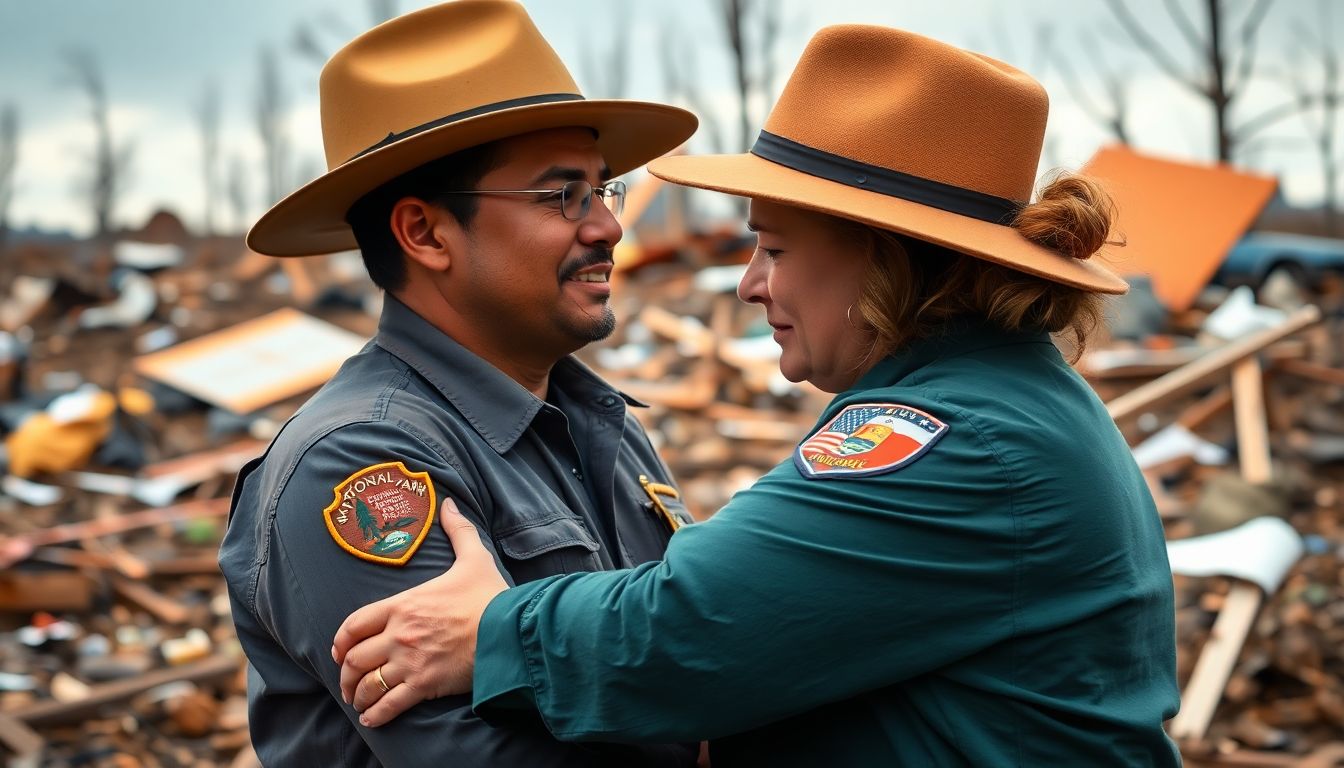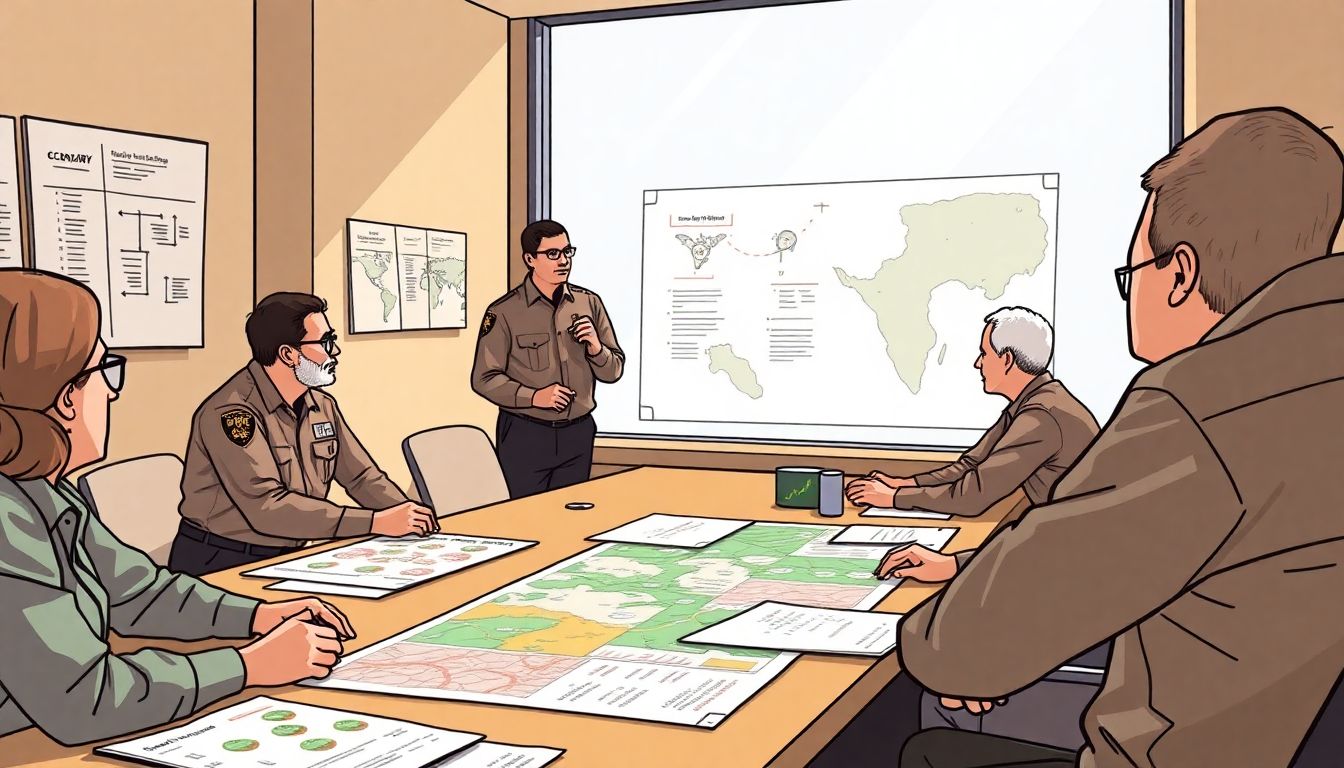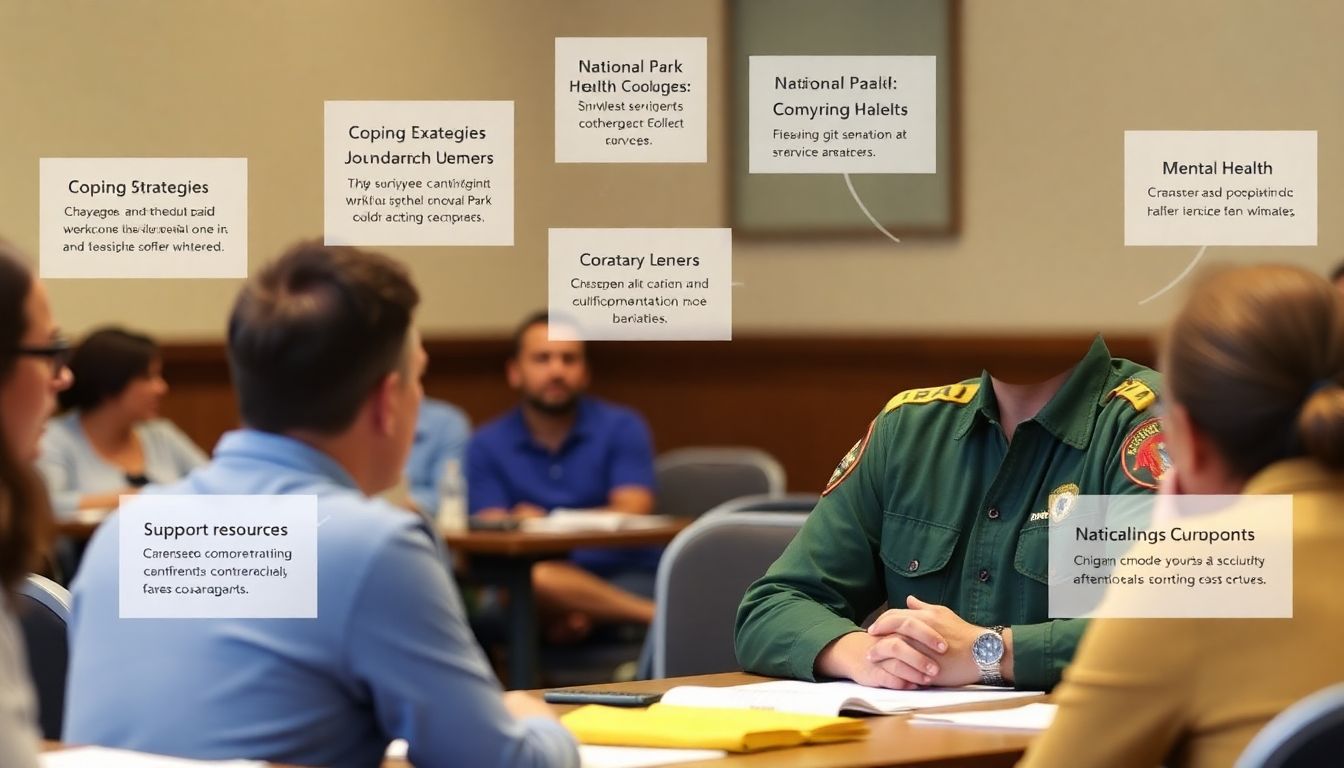Welcome to our in-depth exploration of the challenges faced by the National Park Service (NPS) during disastrous events. While the operational aspects of disaster management are well-documented, the mental and emotional well-being of NPS employees often goes overlooked. Join us as we delve into the personal stories, innovative planning tools, and the critical need for mental health support within the NPS.
Preparing for the Unseen: The Mental and Emotional Toll on NPS Employees
In the heart of a forest charred by the merciless lick of wildfires, stands a figure of resolve and hope—a National Park Service ranger. Their uniform, a symbol of dedication and service, contrasts sharply with the blackened trees and ash-covered ground. The ranger’s expression is thoughtful, determined, reflecting the unyielding spirit of the NPS employees who face disasters with unwavering commitment.
The scene, though marred by devastation, is not devoid of life. The ranger’s presence signifies the promise of rebirth and restoration. As they survey the landscape, they are already planning, already envisioning the renewal that will follow. This is not an endpoint, but a transition, a testament to the resilience of nature and the resolve of those who protect it.
The burnt forest, once a thriving ecosystem, now serves as a canvas for new beginnings. The ranger, amidst the destruction, embodies the NPS’s dedication to preserving and rejuvenating our natural heritage. Their determination is a beacon, a reminder that even in the face of disasters, hope persists, and with it, the will to restore and rebuild.

The Hidden Impact of Disasters
The mental and emotional challenges faced by National Park Service (NPS) employees during and after disasters are immense and often overlooked. The toll of these events goes beyond physical devastation, leaving park staff to grapple with significant stress, trauma, and even loss of life.
During these trying times, NPS employees are tasked with evacuating visitors, protecting park resources, and coordinating with emergency services. Kevin Sweeney, a park ranger at Yosemite National Park, recalls the 2018 Ferguson Fire, “The smoke was so thick, you couldn’t see the sun. We were working around the clock, uncertain if we’d have a home to return to.” The uncertainty and exhaustion can be overwhelming, leading to heightened anxiety and stress.
The aftermath of a disaster brings its own set of challenges. Jennifer Gibson, a park employee at Everglades National Park, remembers the devastation left by Hurricane Irma, “Seeing the park you love and have sworn to protect in tatters is heart-wrenching. We lost countless animals, and the landscape was unrecognizable.” The loss can be profound and deeply personal, often leading to feelings of grief and despair.
Moreover, the road to recovery can be long and arduous. Park staff often face the following challenges post-disaster:
- Extended work hours and increased workload
- Limited resources and support
- Trauma and PTSD
- Loss of personal property and displacement
Despite these hardships, NPS employees continue to serve and protect our national parks, demonstrating unwavering dedication and resilience in the face of adversity.

Scenario Planning: A Crucial Tool
Scenario planning, a strategic tool with roots in the military and private sectors, plays a pivotal role in anticipating the physical impacts of disasters. By envisioning a range of plausible futures, this method helps organizations prepare for uncertainty and build resilience. When it comes to parks, scenario planning is invaluable for anticipating and mitigating the effects of natural disasters, climate change, and other unpredictable events.
In the context of parks management, scenario planning involves creating multiple, divergent storylines about what the future might hold. These narratives consider various factors, such as changes in climate, land use, and visitor demographics. By exploring these possibilities, parks can take proactive measures to protect their ecosystems, infrastructure, and visitors. For instance, a park might use scenario planning to anticipate the impacts of increased wildfire risk, enabling managers to develop strategies for fire prevention, suppression, and post-fire restoration.
One exemplary case is Yellowstone National Park. Faced with the potential impacts of climate change, park managers employed scenario planning to envision different futures for the park’s ecosystems and resources. Through this process, they identified key vulnerabilities, such as the potential for increased wildfires and shifts in wildlife habitats. This information has been crucial in developing adaptive management strategies to protect the park’s iconic landscapes and species.
Another park that has effectively used scenario planning is Golden Gate National Recreation Area. Given its location near the San Francisco Bay, the park is vulnerable to sea-level rise and storm surges. By employing scenario planning, park managers have been able to:
- Visualize the potential impacts of different sea-level rise scenarios
- Identify priority areas for habitat restoration and protection
- Develop strategies for relocating or reinforcing park infrastructure
This proactive approach has positioned Golden Gate National Recreation Area as a leader in coastal climate adaptation.

The Missing Piece: Mental Health Preparedness
In the realm of disaster planning, one critical area that often goes overlooked is the mental health of National Park Service (NPS) employees. While physical safety and operational continuity are paramount, the psychological well-being of those tasked with managing and responding to crises is equally important. Current disaster planning protocols tend to focus heavily on logistical and strategic aspects, leaving a significant gap in addressing the mental health needs of these essential workers.
Incorporating mental health tools into scenario-based planning is not just an option; it’s a necessity. During high-stress situations, NPS employees are often the first responders, dealing with everything from natural disasters to human-caused emergencies. The psychological toll of these events can be immense, leading to issues such as post-traumatic stress disorder (PTSD), anxiety, and depression. By integrating mental health considerations into planning scenarios, NPS can better prepare its employees for the emotional challenges they may face.
The potential benefits of incorporating mental health tools into disaster planning are manifold. Firstly, it ensures that employees are better equipped to handle the psychological impacts of disasters, leading to improved resilience and quicker recovery. Secondly, it fosters a supportive work environment where mental health is prioritized, which can enhance overall job satisfaction and retention rates. Additionally, it can lead to more effective response and recovery efforts, as mentally prepared employees are better able to make sound decisions under pressure.
To achieve these benefits, NPS can implement several strategies:
- Provide regular mental health training and workshops tailored to disaster scenarios.
- Establish peer support networks where employees can share experiences and offer mutual aid.
- Offer accessible mental health resources, such as counseling services and helplines, specifically designed for disaster responders.
- Incorporate mental health check-ins as a standard part of post-disaster debriefings.
By taking these steps, NPS can bridge the gap in addressing the mental health of its employees during disaster planning, creating a more holistic and supportive approach to crisis management.

Building Resilience: Proven Ways to Prepare
Building resilience and improving disaster preparedness among National Park Service (NPS) employees is paramount to ensuring the safety and continuity of park operations. Resilience, the ability to bounce back from adversity, can be fostered through practical steps and proven methods. Research from the American Psychological Association suggests that individuals can build resilience by maintaining strong social connections, fostering a positive view of oneself, and nurturing a sense of purpose. For NPS employees, this could translate into encouraging team-building activities, promoting a supportive work environment, and clearly defining each employee’s role and significance in park management.
To enhance disaster preparedness, NPS employees should be well-versed in emergency response plans. According to a study published in the Journal of Emergency Management, effective preparedness includes clear communication, comprehensive training, and regular drills. NPS can implement these findings by:
- Developing and disseminating clear emergency protocols.
- Providing regular training sessions on disaster management.
- Conducting routine simulations and drills to reinforce learning.
These steps will not only empower employees but also bolster their self-efficacy, which is the belief in one’s ability to execute actions required to deal with prospective situations.
Coping skills are essential for managing stress and maintaining mental well-being during and after disasters. Effective coping skills include:
-
Problem-solving:
Breaking down large issues into manageable parts.
-
Seeking support:
Reaching out to colleagues, friends, or family for emotional support.
-
Mindfulness and self-care:
Practicing stress-reduction techniques such as deep breathing, meditation, or physical exercise.
The Center for Disease Control recommends these strategies for managing stress and building resilience in high-pressure situations.
Lastly, fostering self-efficacy among NPS employees can significantly improve their resilience and preparedness. According to Albert Bandura’s theory of self-efficacy, individuals with high self-efficacy are more likely to view challenges as tasks to be mastered rather than threats to be avoided. To enhance self-efficacy, NPS can:
- Set achievable goals and provide feedback on progress.
- Offer opportunities for skill development and mastery.
- Encourage a growth mindset that views failures as learning opportunities.
By integrating these strategies, NPS can cultivate a more resilient and prepared workforce ready to handle any challenge.
FAQ
What are the common mental health outcomes for first responders after a disaster?
- Post-traumatic stress disorder (PTSD)
- Anxiety and depression
- Substance abuse
- Suicide
.









